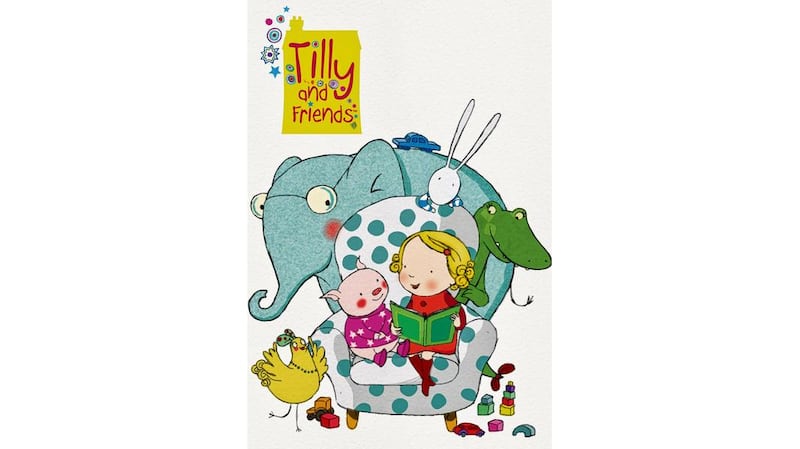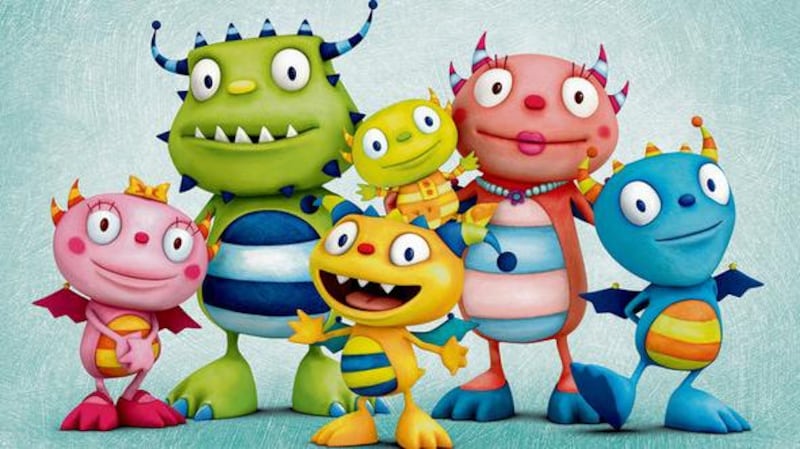If you’re looking for somewhere to escape the downturn, why not make the move to cartoonland? Okay, it’s a little two-dimensional in places, but you’re bound to meet some colourful characters, and it’s the one place in the world of entertainment that doesn’t seem to have been hit by recession.
It may be curtains for the music industry, and it could be a closing chapter for publishing, but for anyone in Ireland embarking on a career in animation, it seems you really can live happily ever after.
Earlier this month, Boulder Media scooped the top prize at the first International Emmy Kids Awards for The Amazing World of Gumball, a co-production with Cartoon Network. It’s not the first time the series, about a small blue cat and his friends, has scooped an international award.


Last November, Gumball won a Best Writer and Best Animation award at the Bafta Children’s Awards for the second year in a row, and has picked up gongs at the 2011 British Animation Awards, the 2011 Annecy International Film Festival, the 39th Annie Awards, and the 2012 Kidscreen Awards, among others.
It’s the latest episode in the ongoing success story of animation in Ireland. Boulder isn’t the only Irish studio scooping awards and accolades. In January, Jam Media added another trophy to its mantelpiece – a UK Broadcast Award for its co-production Baby Jake. Jam also makes the acclaimed children’s series Roy, featuring a cartoon boy trying to get along in the real world. Jam’s newest series, currently airing on CBeebies, is Tilly Friends.
Meanwhile, Brown Bag Films, which won an Oscar nomination in 2002 for Give Up Yer Aul Sins, continues to go from strength to strength. In 2010, the studio was nominated for another Oscar, this time for Granny O’Grimm’s Sleeping Beauty, and in 2011 was nominated for a Bafta for its aquatic adventure series Octonauts. Brown Bag currently makes the most popular preschool animation in the US, Disney’s Doc McStuffins, and Disney Jr has just begun broadcasting the company’s latest series, The Happy Hugglemonsters, created by Irish children’s writer Niamh Sharkey. And it is also creating a new series featuring one of the best-loved characters in children’s literature, Peter Rabbit.
It seems you can’t turn on a children’s TV channel without coming across an Irish animated production or co-production. It’s small wonder that it’s been dubbed the Celtic Tigger.
Over the past six years – since the beginning of the credit crunch – Irish animation has bucked the trend and seen an increase in revenue, employment and international profile. It helps that the industry is being supported by Section 481 tax breaks, plus funding from the Irish Film Board and support from Enterprise Ireland.
The animation boom has also brought an increase in applications to third-level animation courses run by Ballyfermot College of Further Education and the Dún Laoghaire Institute of Art, Design and Technology.
Back from the dead
It’s a second act for an industry that faced extinction in the mid-1990s following the closure of Sullivan Bluth studios, which made Irish-animated feature The Land Before Time, co-produced by Steven Spielberg and George Lucas. Set up in 1985 by Don Bluth, who had jumped ship from Disney in 1979, and Morris Sullivan, the studio was attracted to Ireland by the generous tax breaks and funding offered at the time by the IDA. But things didn’t evolve as planned, and the studio’s subsequent features failed to replicate the success of The Land Before Time.
“What happened with Sullivan Bluth was it closed down, as companies do, and a lot of people were left unemployed, around 300 were let go,” recalls Prof Gareth Lee, who runs the Irish School of Animation in Ballyfermot. “But a lot of people who were let go, or were graduates at the time, they became the seeds for what’s currently in existence. So graduates from that period set up studios that are still going now. They’re all small studios – the biggest would be Brown Bag with 100 to 130 staff, Jam Media with around 67, and Boulder would be quite big too, but a lot of the other ones have between 10 and 15 staff members. So a lot of studios, a lot smaller, which makes [the industry] more robust. You don’t have the whole industry reliant on one big studio or one big project.
“They’re also very export-focused, doing stuff for Disney and others, and for the US and Europe, which means they’re not relying on the domestic market, which is depressed right now.”
Lee runs the annual Irish School of Animation Conference (ISA Con), which had its fourth outing earlier this month at the Printworks in the Morrison Hotel in Dublin. Of the four guest speakers, three had studied in Ireland before moving into high-profile jobs in the international industry.
Simon Kay graduated from Ballyfermot Senior College in 1999, and now works as a motion-capture supervisor, using his specialist skills to create realistic animated characters for films such as Paul and John Carter. It’s the same technology that was used to create Gollum in the Lord of the Rings and Hobbit films, and it’s increasingly used to allow animated characters to rub shoulders with real-life actors.
“I started off in traditional animation, and there was a massive boom around that time. The Lion King was coming out, and Beauty and the Beast, and we were going, great, when we come out of here, we’re going to go straight into jobs. But then everything started closing up. Then it all started coming up again with Pixar.”
When people thought computer-generated animation was going to make traditional animation obsolete, the focus shifted back to hand-drawn features. “It all mixes and matches. The principles that you learn in animation still apply – once you have the basics you can move it on to anywhere you like.”
Brendan McCarthy (23) is a first-year animation student in Ballyfermot. He got the animation bug after doing work experience in Cartoon Saloon in Kilkenny, makers of the Oscar-nominated feature The Secret of Kells.
“My lecturer says you can make a good living out there. He jokes that animators have loads of money because they have no time to spend it.”
Most of the students I speak to at ISA Con agree that you need patience, skill and attention to detail to be an animator – but you also need to specialise. With studios becoming bigger, there’s an increasing need for animators in particular niche roles, whether it’s motion-capture, 3-D modelling or knowing all about anatomy and biology so you can create believable flora and fauna.
For students setting out on a two- or four-year course in animation, the big question must be: will the ink run dry for animators in Ireland? “It has the potential for that, but I think it’s a more robust industry than it was back in the days of Sullivan Bluth,” says Prof Lee. “It is a fantastic time for animators. There are a lot of opportunities out there. The studios are good, and they’re doing good work.
“My bugbear would be that not enough is being invested in education and training, which is a big part of bringing people into employment. What bothered me about the recent Budget was, yes, they extended the section 481 tax incentive, which was brilliant, but at the same time they’re cutting education. So the feeder for that industry that they want to keep going is being cut. They’re not thinking widely enough about the industry. The industry has the potential to grow and create even more jobs. And the talent is definitely there.”












